Podcast advertising has become one of the most effective ways for brands to reach highly engaged audiences. As the industry continues to expand, choosing the right podcast ad networks can have a major impact on your campaign’s success. Today, various podcast ad networks offer specialised services for advertisers and publishers, helping connect brands with listeners across countless genres. Whether you’re exploring podcasts about advertising or planning your next marketing strategy, this guide highlights the best podcast ad networks in 2026, giving you a solid foundation for making smart, data-driven decisions.
What are Podcast Ad Networks
A professional podcast network is an organisation that connects advertisers with podcast creators, streamlining the process of marketing on podcasts. These networks act as intermediaries, managing ad sales, placements, and performance tracking while giving advertisers access to aggregated audience data and a wide range of content niches. For podcasters, networks simplify monetization by efficiently filling their ad inventory.
Most networks offer two main ad types: baked-in and dynamically inserted. Baked-in ads are part of the podcast’s audio file, read by the host, and remain permanently. Dynamic Ad Insertion (DAI) technology, now standard across many leading platforms, places ads into shows at the time of download or streaming, allowing for precise targeting based on listener demographics, location, and behaviour. Many of the best podcast ad networks in 2026 use advanced DAI systems to help brands deliver more personalised and effective campaigns.
Criteria for Selecting a Podcast Ad Network
To select the best network, advertisers evaluate several key factors. These criteria help determine which platform aligns with specific campaign goals and budget constraints.
- Audience Reach and Targeting: The network’s total number of available listeners and the sophistication of its targeting capabilities are critical. This includes demographic, geographic, and behavioural targeting options.
- Content and Show Quality: The quality and genre of podcasts within a network’s portfolio affect brand alignment and safety. Advertisers seek networks with reputable shows that match their brand’s image.
- Ad Formats and Technology: The types of ads supported (pre-roll, mid-roll, post-roll) and the underlying technology (DAI, programmatic buying) influence campaign flexibility and effectiveness.
- Analytics and Reporting: Detailed performance metrics are essential for measuring return on investment (ROI). Networks must provide clear data on impressions, downloads, and listener engagement.
- Pricing Models and Costs: Common models include Cost Per Mille (CPM), which is the cost per 1,000 impressions, and Cost Per Acquisition (CPA). Understanding these models enables effective management of campaign budgets.
Top 10 Podcast Ad Networks of 2026
Here is the list of top podcast ad networks of 2026 that deliver innovative solutions, connecting brands with listeners through precise targeting and dynamic ads.
- Megaphone by Spotify
- SXM Media
- Acast
- Podbean
- Midroll Media
- AdvertiseCast by Libsyn
- RedCircle
- Spreaker by iHeartRadio
- PodcastOne
- Gumball
1. Megaphone by Spotify
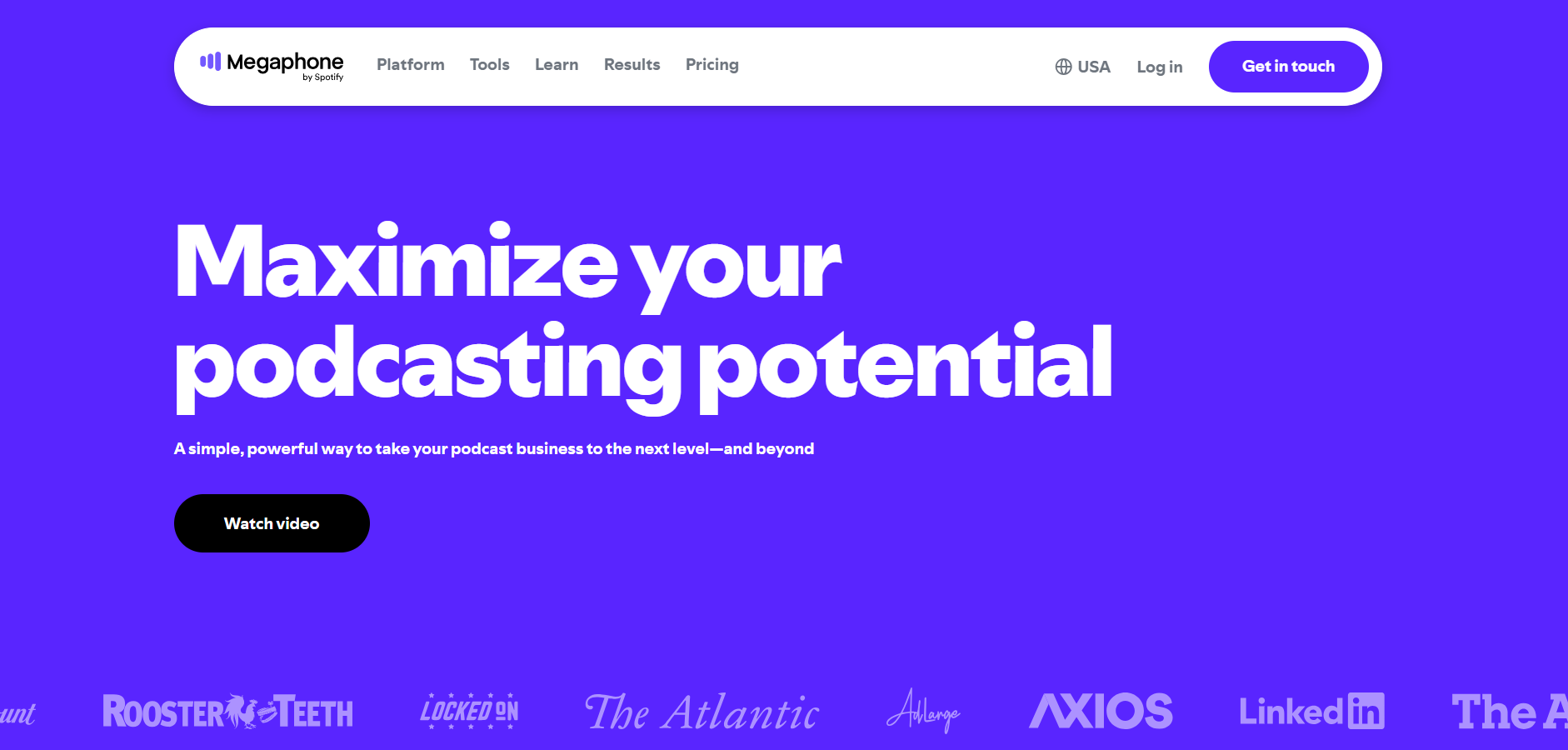
Megaphone by Spotify is a leading podcast hosting and monetization platform built for professional publishers and advertisers. It leverages Spotify’s data and technology to deliver dynamic ad insertion and precise audience targeting. The platform connects advertisers with millions of listeners through the Spotify Audience Network. Its analytics and automation tools streamline campaign management for both creators and brands.
Features
- Dynamic Ad Insertion (DAI): Seamlessly inserts targeted ads into podcast episodes based on audience data.
- Spotify Audience Network Integration: Access to Spotify’s vast listener base and behavioural insights.
- Megaphone Campaign Manager (MCM): Centralised dashboard for managing ad inventory, campaigns, and analytics.
- Enterprise-Level Hosting: Reliable, scalable hosting with high performance for large publishers.
- Advanced Analytics: Offers granular performance reports on impressions, listener engagement, and revenue.
Pros
- Deep audience targeting using Spotify’s streaming data.
- Efficient monetisation for publishers through automated ad management.
- Access to Spotify’s global listener network.
- High-quality hosting and fast delivery.
- Intuitive dashboard and reporting tools.
Cons
- Primarily designed for large publishers less suitable for small creators.
- Limited customisation options outside Spotify’s ecosystem.
- CPM rates can vary widely depending on targeting.
- Requires integration within Spotify’s ad framework.
- Less control over direct ad partnerships compared to independent platforms.
2. SXM Media
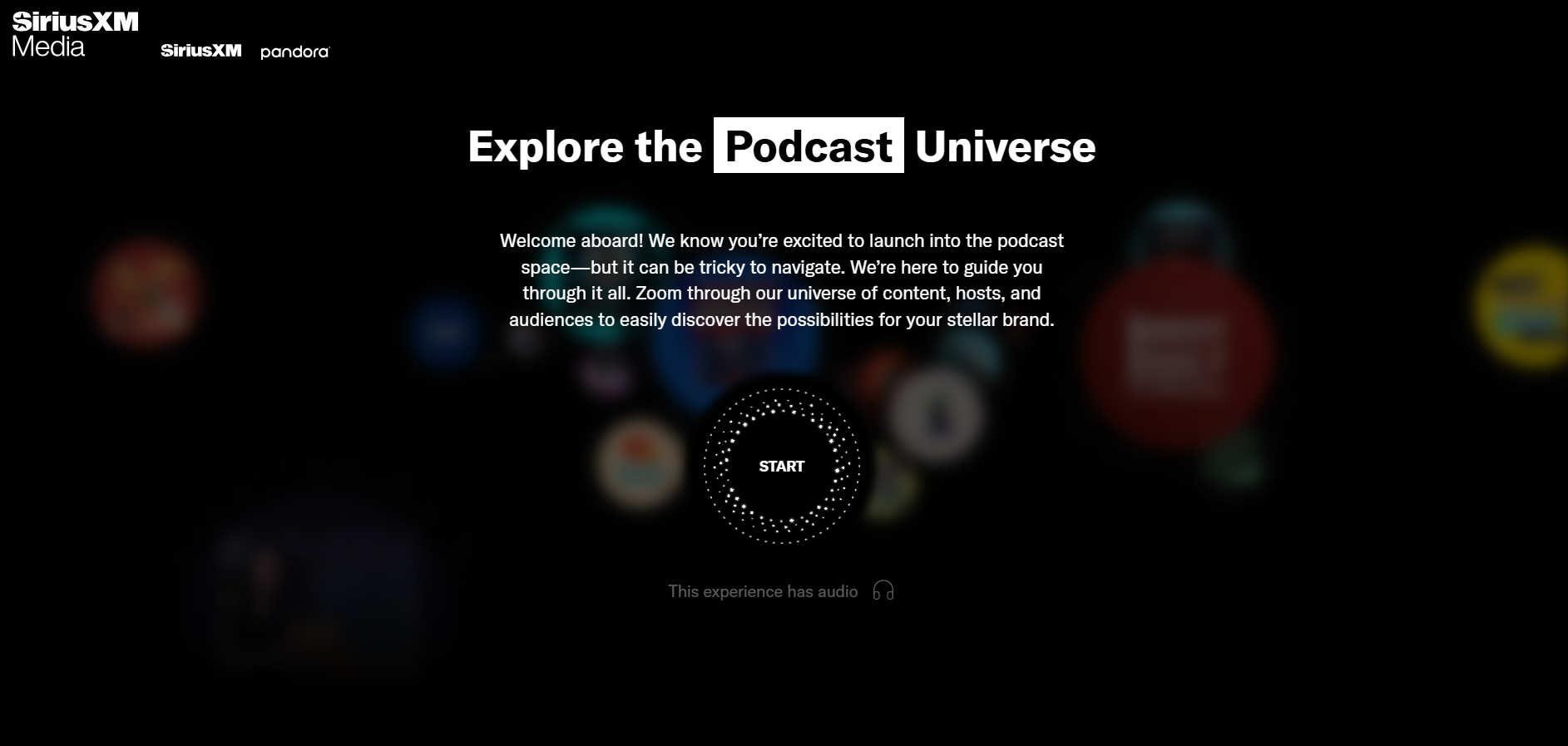
SXM Media is the unified advertising arm of SiriusXM, Pandora, and Stitcher, forming one of North America’s largest digital audio networks. It connects advertisers to millions of listeners through live radio, streaming music, and premium podcasts. The platform excels in delivering data-driven, cross-platform audio campaigns with advanced targeting. Powered by AdWizz technology, it ensures accurate performance measurement and campaign optimisation.
Features
- Cross-Platform Reach: Access to audiences across SiriusXM, Pandora, and Stitcher.
- Dynamic Ad Insertion: Seamless delivery of targeted podcast and audio ads in real time.
- AdWizz Technology Stack: Comprehensive ad delivery, reporting, and analytics tools.
- Programmatic Audio Buying: Automated ad placement for efficient campaign execution.
- Host-Read & Branded Content Options: Authentic endorsements and custom integrations with top creators.
Pros
- Massive reach across diverse audio platforms.
- Strong targeting capabilities using first-party listener data.
- Detailed campaign analytics and performance metrics.
- Supports both automated and premium custom ad formats.
- Trusted by top brands for large-scale audio campaigns.
Cons
- Primarily designed for enterprise advertisers—less accessible to small businesses.
- Limited self-service options for independent creators.
- CPM rates may be higher due to premium inventory.
- Complex setup for cross-platform campaign management.
- Dependence on AdWizz may limit third-party integration flexibility.
3. Acast
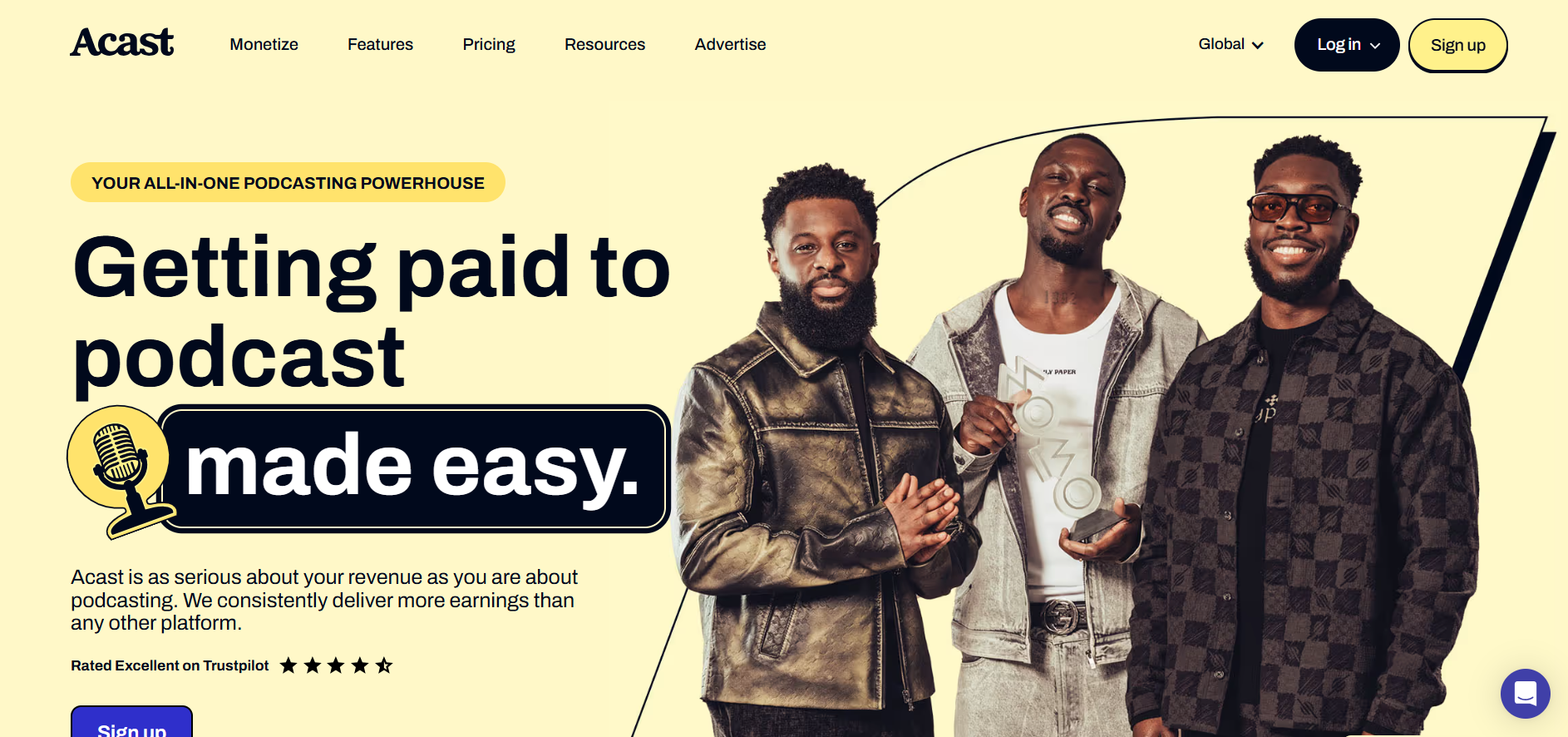
Acast is a leading global podcast platform that empowers creators with hosting, monetisation, and audience growth tools. It’s Acast Marketplace connects advertisers with thousands of podcasts worldwide, spanning multiple genres and audiences. Known for its open podcasting approach and creative ad formats, Acast enables data-driven, dynamic ad campaigns. It bridges the gap between independent creators and global advertisers through innovative audio solutions.
Features
- Acast Marketplace: Connects advertisers to a vast global network of podcasts.
- Dynamic Ad Insertion (DAI): Enables precise, real-time ad placements in all standard formats.
- Sponsored Stories: Unique branded content segments for native ad experiences.
- Advanced Targeting: Leverages first-party listener data for demographic, interest, and location-based targeting.
- Free Hosting & Analytics: Offers podcasters reliable hosting, insights, and monetisation tools.
Pros
- Global reach with strong presence in Europe, the US, and Australia.
- Inclusive platform supporting both indie and enterprise podcasters.
- Creative ad formats like Sponsored Stories enhance listener engagement.
- Transparent analytics and reporting for both advertisers and creators.
- Flexible monetisation through dynamic ads and sponsorships.
Cons
- CPM rates may be high for niche or premium inventory.
- Limited control over ad placement in free hosting plans.
- Ad targeting options may vary by region.
- Smaller creators might face competition for premium advertisers.
- Dependence on Acast’s infrastructure limits off-platform monetisation flexibility.
4. Podbean
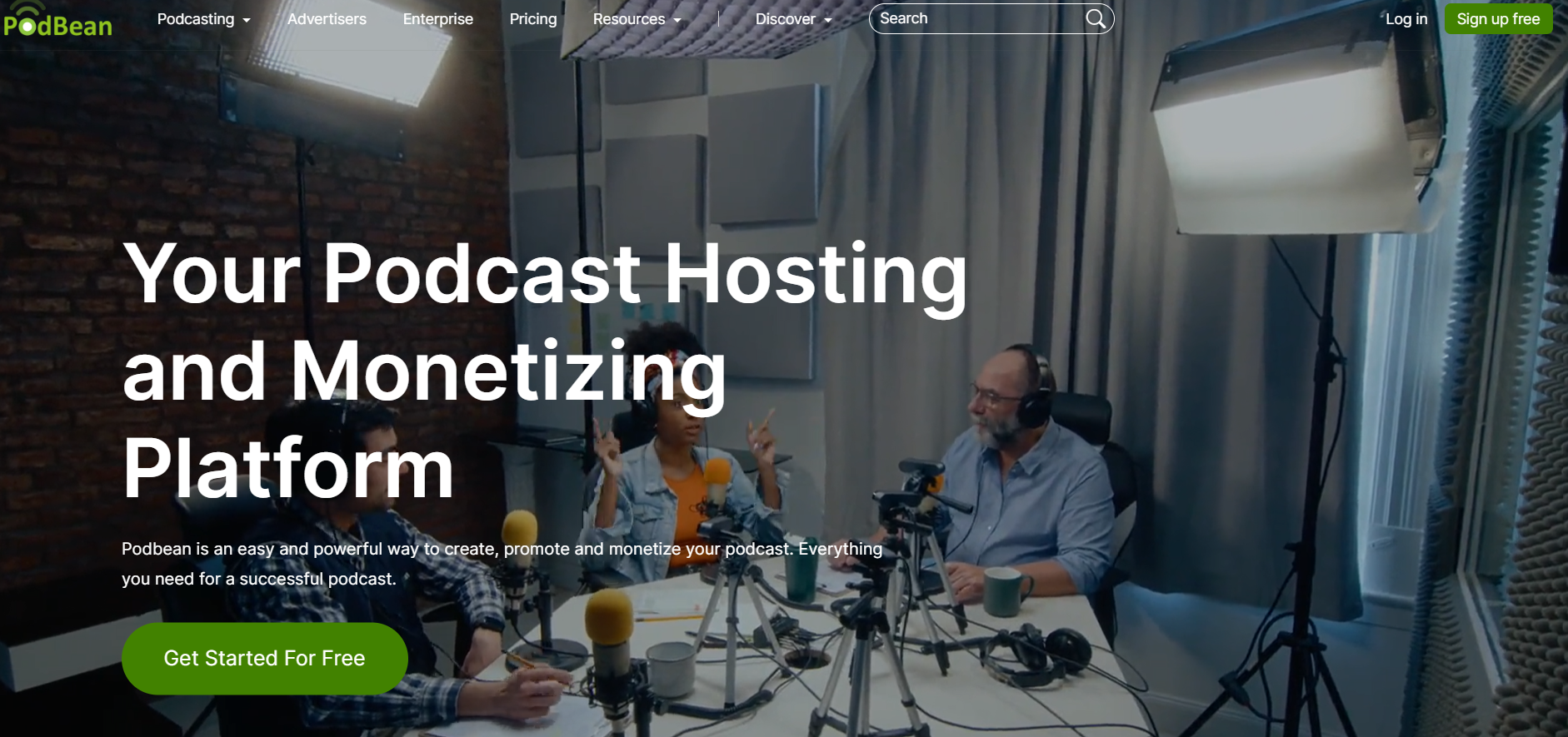
Podbean is an all-in-one podcast platform offering hosting, distribution, and monetisation solutions for creators and advertisers alike. Its Ads Marketplace connects brands with a wide variety of podcasts through automated, dynamic ad insertion. Designed for simplicity, Podbean makes podcast advertising accessible even to beginners. With flexible pricing and diverse inventory, it’s a go-to choice for both small businesses and established advertisers.
Features
- Podbean Ads Marketplace: Connects advertisers to a broad network of hosted podcasts.
- Dynamic Ad Insertion (DAI): Automatically places targeted ads across relevant episodes.
- Flexible Campaign Controls: Set budgets, targeting, and schedules directly within the platform.
- Multiple Monetisation Options: Includes ads, premium content, and patron programs for creators.
- User-Friendly Interface: Simplified dashboard for managing campaigns and analysing results.
Pros
- Easy-to-use platform ideal for beginners and small advertisers.
- Broad range of podcast genres and audiences.
- Dynamic ad insertion ensures efficient ad delivery.
- Affordable CPM pricing with customizable budgets.
- Supports multiple monetisation paths for creators.
Cons
- Targeting options are less advanced than enterprise platforms.
- Limited global reach compared to networks like Spotify or Acast.
- Fewer creative ad formats beyond standard pre-, mid-, and post-roll.
- Smaller data insights and analytics depth.
- Ads Marketplace primarily focuses on Podbean-hosted shows only.
5. Midroll Media
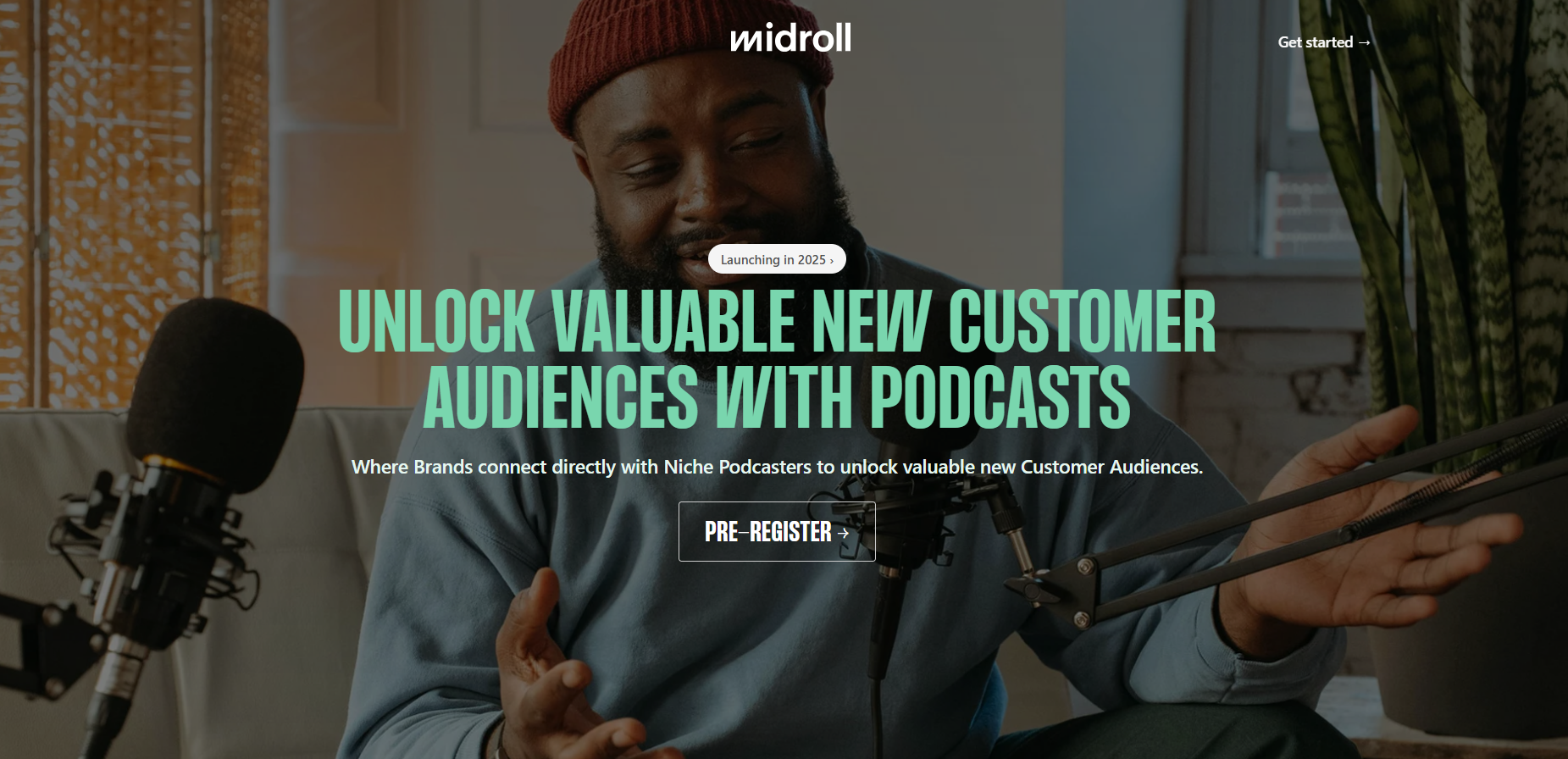
Midroll Media, a division of SXM Media, is a pioneering podcast advertising network specialising in premium, host-read ad campaigns. Known for its curated roster of top-tier shows, it focuses on authentic, personality-driven brand integrations, making it a go-to platform for podcasts about advertising. The network connects advertisers with influential voices across comedy, culture, and storytelling genres. Midroll’s boutique approach ensures personalised campaign development and measurable impact through detailed analytics.
Features
- Host-Read Advertising: Personalised endorsements delivered by a trusted podcast.
- Curated Podcast Network: Over 200 premium shows across diverse, high-engagement genres.
hosts - Custom Campaign Development: Tailored ad strategies aligned with each show’s tone and audience.
- Comprehensive Analytics: Performance tracking through downloads, demographics, and conversions.
- Integration with SXM Media: Access to broader resources while retaining boutique service quality.
Pros
- High listener trust through authentic host-read ads.
- Premium, handpicked shows with strong audience loyalty.
- Personalised brand integration for maximum relevance.
- Detailed performance insights and conversion tracking.
- Backed by SXM Media’s extensive infrastructure and reach.
Cons
- Limited scalability due to curated show selection.
- Premium pricing may deter smaller advertisers.
- Fewer programmatic or automated buying options.
- Campaign setup can require more collaboration time.
- Primarily U.S.-focused with less international reach.
6. AdvertiseCast by Libsyn
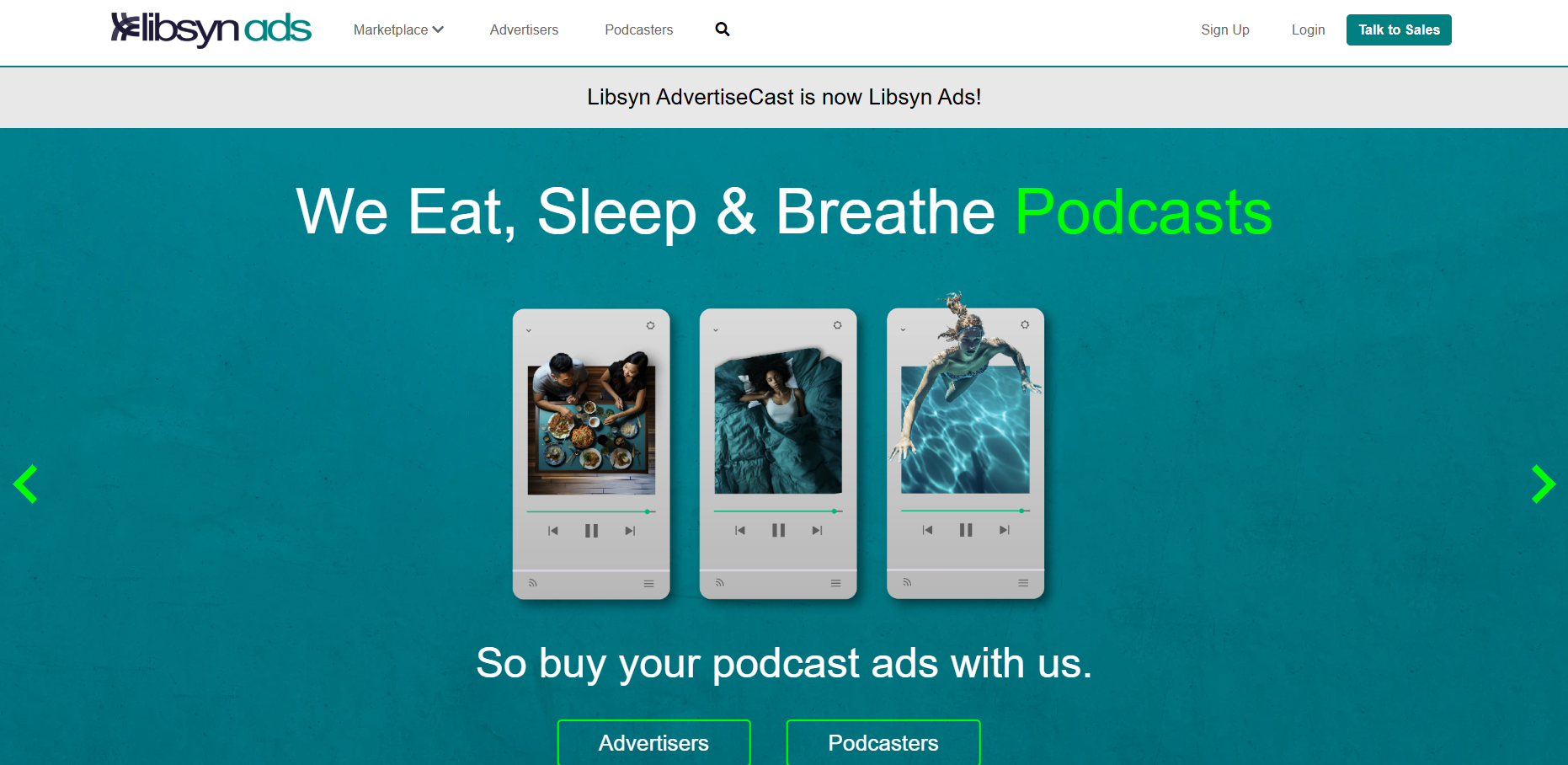
AdvertiseCast, the advertising division of Libsyn, is a leading podcast ad marketplace that connects brands with thousands of shows across multiple genres. Combining Libsyn’s extensive hosting data with advanced targeting tools enables precise audience reach and campaign optimisation. The platform supports both self-serve and managed ad buying, offering flexibility for all advertiser sizes. With transparent CPM pricing and scalable options, AdvertiseCast is a go-to for efficient podcast advertising.
Features
- Extensive Podcast Inventory: Access to thousands of shows across diverse categories via Libsyn’s hosting network.
- Dynamic Ad Insertion (DAI): Enables real-time, targeted ad placement based on audience data.
- Self-Serve Platform: Allows advertisers to manage campaigns, budgets, and show selection independently.
- Managed Service Option: Expert team support for strategy, creative, and execution.
- Detailed Targeting & Analytics: Campaign data by geography, device, genre, and listener demographics.
Pros
- Large podcast inventory for broad or niche audience targeting.
- Offers both programmatic and direct ad buying flexibility.
- Transparent CPM-based pricing for cost control.
- Integration with Libsyn provides valuable hosting insights.
- Accessible for small businesses and agencies alike.
Cons
- Limited creative ad formats beyond standard placements.
- Reporting depth may vary between self-serve and managed options.
- Competition for premium podcast slots can drive up CPM rates.
- Less emphasis on host-read or branded content than boutique networks.
- Primarily focused on Libsyn-hosted podcasts, limiting cross-platform reach.
7. RedCircle
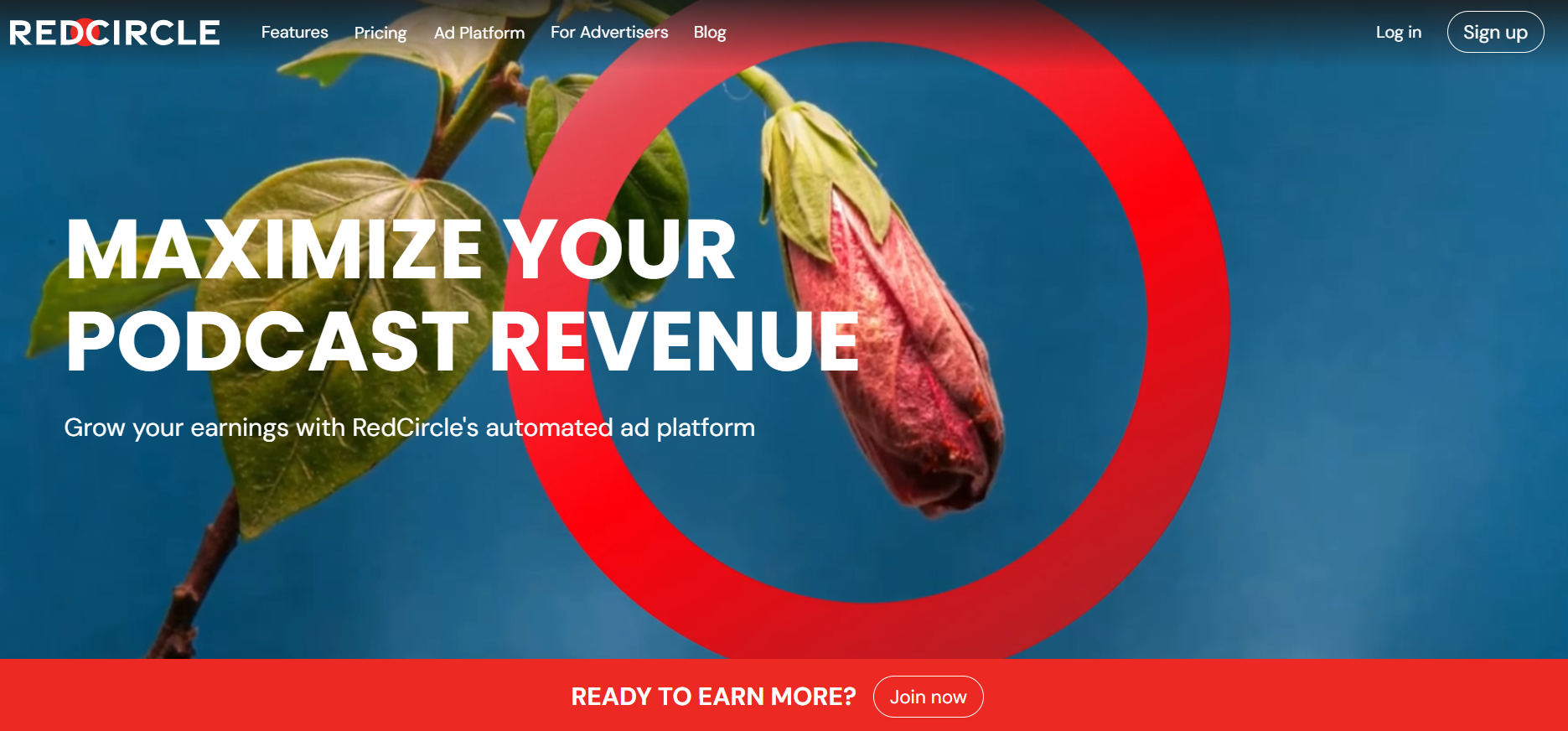
RedCircle is a podcasting platform designed to empower independent creators with accessible monetisation and distribution tools. Its RedCircle Ad Platform (RAP) is a programmatic marketplace that automates ad buying and dynamic insertion. Advertisers can efficiently reach diverse, niche audiences across thousands of independent podcasts. With its creator-first model, RedCircle fosters a balanced ecosystem for both advertisers and podcasters.
Features
- RedCircle Ad Platform (RAP): A fully programmatic marketplace for automated podcast ad buying.
- Dynamic Ad Insertion (DAI): Real-time placement of targeted ads across multiple podcasts.
- Advanced Targeting: Filter audiences by geography, podcast category, and listener data.
- Creator Monetisation Tools: Automatic ad fill ensures steady income for podcasters.
- Independent Podcast Network: Access to unique, niche content from diverse creators.
Pros
- Strong focus on supporting independent creators.
- Efficient programmatic ad buying for scalable campaigns.
- Dynamic targeting enables precise audience reach.
- Affordable entry point for smaller advertisers.
- Rapidly growing network of niche and engaged shows.
Cons
- Smaller reach compared to enterprise-level networks like Spotify or SXM.
- Limited premium or celebrity podcast inventory.
- Fewer custom or host-read ad options.
- Reporting tools are less robust than larger platforms.
- Dependent on the size and activity of its independent creator base.
8. Spreaker by iHeartRadio
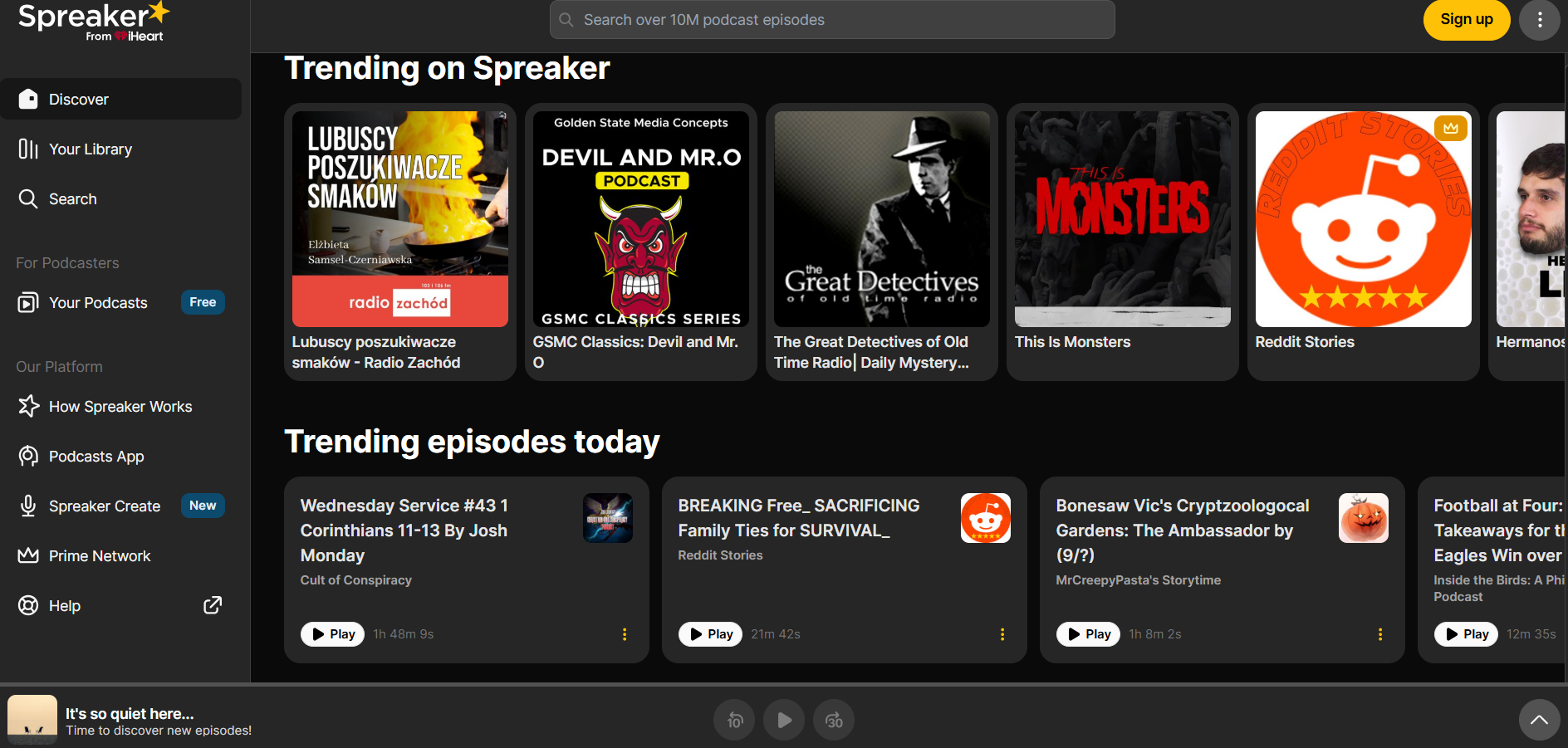
Spreaker, part of the iHeartRadio network, is a full-service podcast hosting and monetisation platform. Its ad network connects advertisers with a vast range of podcasts, leveraging iHeartMedia’s extensive digital audio ecosystem. Through programmatic ad insertion, Spreaker enables real-time, data-driven ad delivery and optimisation. The platform combines scalability, automation, and analytics to serve both advertisers and creators effectively.
Features
- Integration with iHeartRadio: Access to one of the largest digital audio audiences worldwide.
- Dynamic Ad Insertion (DAI): Real-time, automated placement of targeted ads.
- Programmatic Ad Exchange: Connects with multiple partners for optimal ad fill and CPM rates.
- Comprehensive Analytics: Tracks performance metrics for both creators and advertisers.
- Monetisation Tools: Streamlined revenue generation for podcasters of all sizes.
Pros
- Wide reach through iHeartRadio’s powerful distribution network.
- Automated, efficient ad delivery with programmatic capabilities.
- Competitive CPM rates via multi-partner ad exchange.
- Easy-to-use tools for both creators and advertisers.
- Robust analytics for performance tracking and optimisation.
Cons
- Primarily focused on iHeart ecosystem content.
- Limited creative flexibility for custom or host-read campaigns.
- Programmatic focus may reduce personalisation in ads.
- Revenue split may favour the platform over small creators.
- Interface and reporting tools are less advanced than enterprise platforms like Megaphone or Acast.
9. PodcastOne
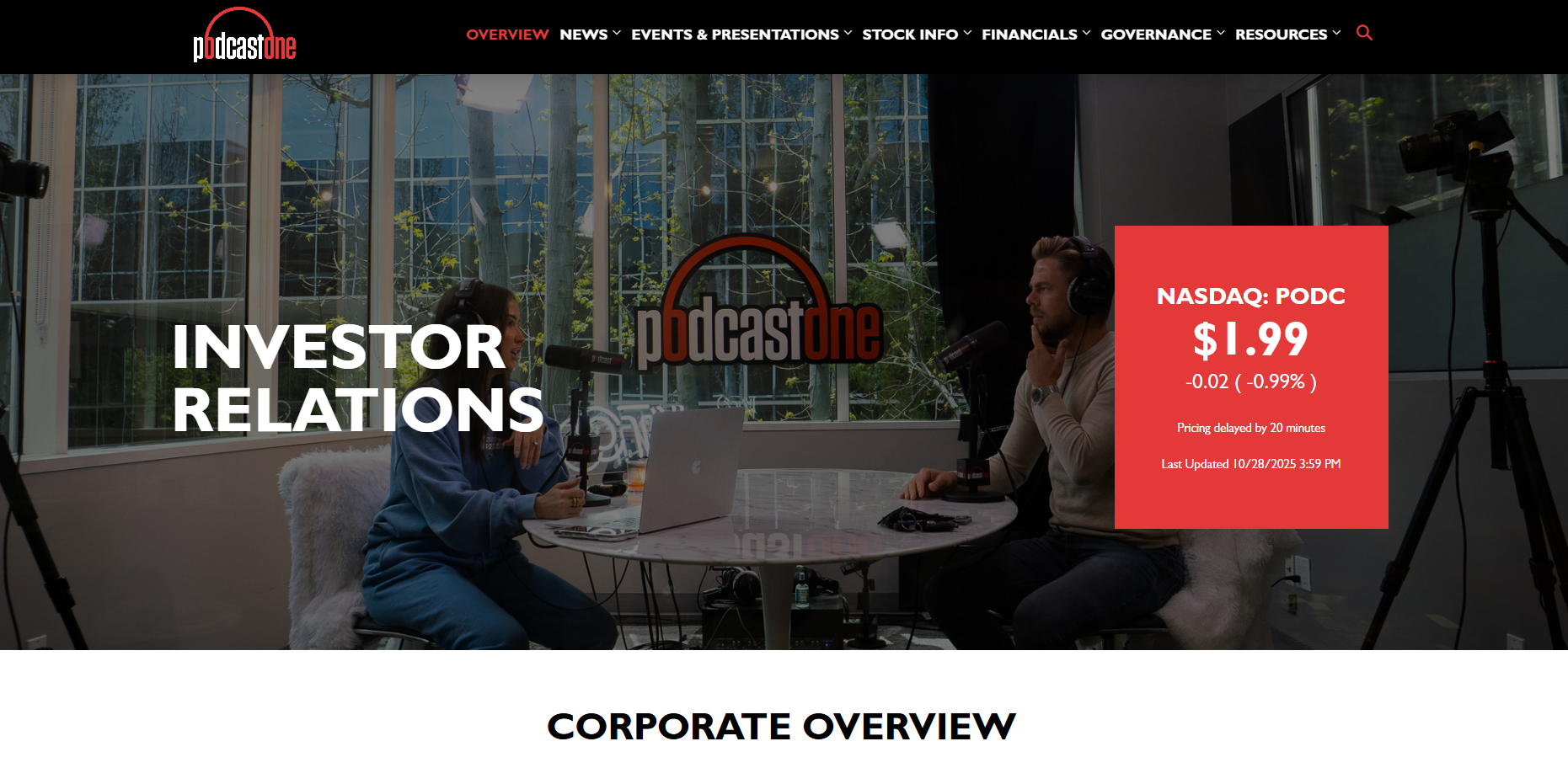
PodcastOne is a premier advertiser-supported podcast network known for its celebrity-hosted shows and premium content across sports, comedy, and pop culture. Founded by Norm Pattiz, it connects national brands with engaged audiences through authentic, talent-driven programming. The network blends host-read, pre-recorded, and branded content for maximum impact. With strong analytics and dynamic ad technology, PodcastOne delivers both scale and quality in podcast advertising.
Features
- Celebrity-Hosted Podcasts: Access to star-powered shows with loyal fan bases.
- Integrated Advertising Campaigns: Combines host-read, pre-recorded, and branded content.
- Dynamic Ad Insertion (DAI): Enables precise targeting and seamless ad delivery.
- Custom Campaign Development: Collaborative approach between brands and PodcastOne’s sales team.
- Detailed Analytics & Reporting: Provides listener insights and campaign performance metrics.
Pros
- Strong appeal through celebrity and influencer hosts.
- High-quality, brand-safe content environment.
- Flexible ad formats for both branding and performance goals.
- Deep engagement and authenticity from host-read endorsements.
- Data-backed post-campaign performance tracking.
Cons
- Premium pricing due to talent-driven content.
- Limited accessibility for smaller advertisers or budgets.
- Primarily focused on U.S.-based audiences.
- Less automation compared to programmatic ad networks.
- Smaller overall inventory compared to open podcast marketplaces like Acast or AdvertiseCast.
10. Gumball
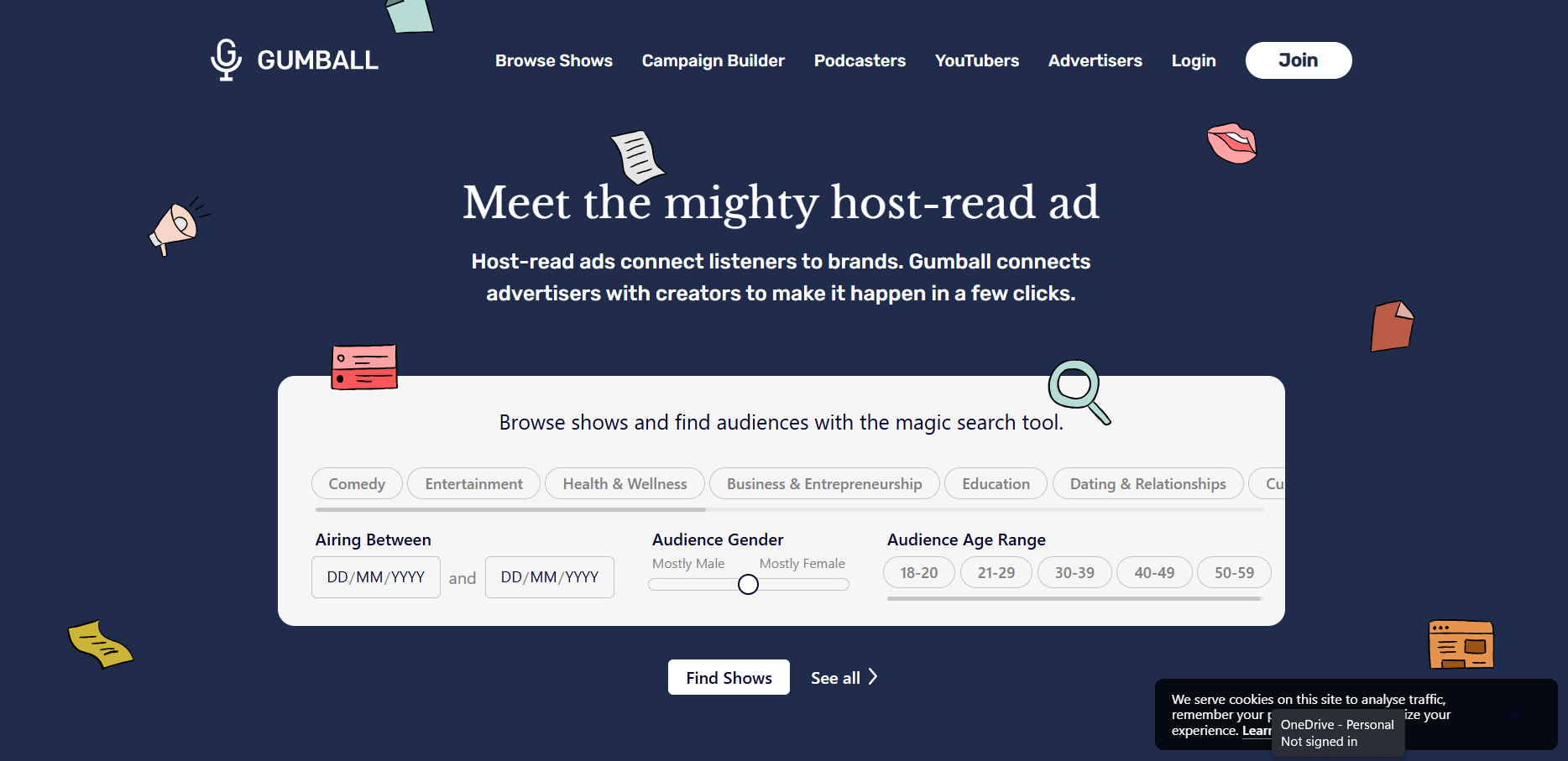
Gumball is a streamlined podcast advertising marketplace that makes buying host-read ads simple, transparent, and scalable. The platform connects advertisers with independent podcasters through an intuitive self-serve interface. With upfront pricing and direct host collaboration, it removes the friction from traditional ad booking. Gumball’s focus on authenticity and accessibility makes it a top choice for brands seeking genuine audience connections.
Features
- Self-Serve Marketplace: Discover, book, and manage podcast ad campaigns easily.
- Transparent Pricing: Fixed-rate costs displayed upfront for each show.
- Direct Host Collaboration: Enables direct communication for ad script reviews and creative alignment.
- Curated Podcast Network: Handpicked, independent shows across diverse categories.
- Campaign Dashboard: Track ad performance, delivery, and payments in one place.
Pros
- Simplifies host-read ad buying with a user-friendly interface.
- Transparent, fixed-rate pricing removes negotiation hassles.
- Authentic, host-driven endorsements foster strong listener trust.
- Supports independent creators and niche audiences.
- Streamlined workflow with integrated communication and payment tools.
Cons
- Limited to host-read ad formats only.
- Smaller overall inventory compared to large programmatic platforms.
- Minimal targeting beyond show selection and demographics.
- Manual elements may reduce automation efficiency.
- Primarily focused on U.S.-based podcasts and advertisers.
Emerging Trends in Podcast Advertising for 2026
Podcast advertising in 2026 reflects a major shift toward smarter, data-driven strategies. AI and predictive analytics are improving audience segmentation, allowing podcast ad networks to deliver hyper-relevant ads that match listeners’ interests and behaviors. Programmatic ad buying within these networks has become more advanced, giving advertisers real-time control and scalability. Meanwhile, host-read ads continue to thrive across leading podcast ad networks, valued for their authenticity and personal tone. The growing popularity of video podcasts introduces new creative formats that blend sight, sound, and storytelling. Interactive audio ads are also gaining traction, letting listeners engage directly with brands through network-driven placements. Contextual targeting now enables podcast ad networks to align ads with show topics dynamically, improving listener experience. Together, these innovations make podcast advertising more measurable, flexible, and impactful than ever before.
Measuring Success in Podcast Advertising Campaigns
Evaluating podcast ad performance goes beyond counting downloads; it’s about understanding real listener impact. Key metrics such as impressions, completion rates, engagement levels, and conversions reveal how well ads resonate with audiences. Many of the best podcast ad networks in 2026 now provide advanced analytics dashboards that track campaign performance in real time, giving advertisers deeper insight into what works. Brands can also measure lift through surveys or follow-up studies to gauge awareness and recall, while tracking promo codes or unique URL links ad exposure directly to sales or sign-ups. Comparing performance across different ad formats—such as host-read versus dynamically inserted ads—helps identify which drives stronger results. Regularly reviewing these insights allows marketers to refine targeting, messaging, and placement strategy. A data-driven approach keeps campaigns efficient, scalable, and aligned with overall marketing goals.
Conclusion
Podcast ad networks in 2026 continue to evolve as a powerful channel for brands seeking engaged, loyal audiences. The industry now offers a diverse mix of podcast advertising platforms and networks, each designed to meet different marketing goals from enterprise-scale campaigns on Megaphone and SXM Media to creator-focused marketplaces like RedCircle and Gumball. Choosing the right platforms from among the best podcast ad networks in 2026 depends on factors such as audience reach, targeting options, ad formats, and campaign flexibility.
Networks that leverage dynamic ad insertion and advanced analytics provide advertisers with greater precision, efficiency, and measurable ROI. Whether focusing on authenticity through host-read ads or scaling campaigns programmatically, brands now have more tools than ever to connect with listeners effectively. Ultimately, success comes from aligning campaign strategy with the strengths of the chosen podcast ad networks and the unique listening habits of each audience.
Read More:
15 Best Internet Marketing Affiliate Programs in 2026
15 Best Jewelry Affiliate Programs in 2026
Best Web Developer Affiliate Program in 2026
Frequently Asked Questions (FAQS)
What is a podcast ad network?
A podcast ad network is a platform that connects advertisers with podcast creators, managing ad sales, placements, and performance tracking.
What types of ads do podcast networks offer?
Networks typically support baked-in (host-read) ads and dynamically inserted ads (DAI), which can be targeted based on listener demographics and behaviour.
What is Dynamic Ad Insertion (DAI)?
DAI is a technology that allows ads to be inserted into a podcast in real time, enabling targeted, personalised advertising at the time of download or streaming.
How do podcast ad networks target listeners?
Networks use data such as demographics, location, listening habits, and interests to deliver relevant ads to the right audience segments.
What is the difference between self-serve and managed ad buying?
Self-serve allows advertisers to independently set budgets, choose shows, and run campaigns, while managed services involve the network’s team handling campaign strategy, creative, and execution.
Which ad formats are most effective in podcasts?
Host-read ads often generate higher listener trust and engagement, while programmatic and dynamically inserted ads provide scalability and precise targeting.
How is podcast advertising priced?
Most networks use a CPM (cost per 1,000 impressions) model, though some also offer CPA (cost per acquisition) or fixed-rate pricing depending on the platform and campaign.
How do I choose the best podcast ad network for my brand?
Evaluate audience reach, targeting options, content quality, ad formats, analytics capabilities, and pricing models to select a network that aligns with your campaign goals and budget.
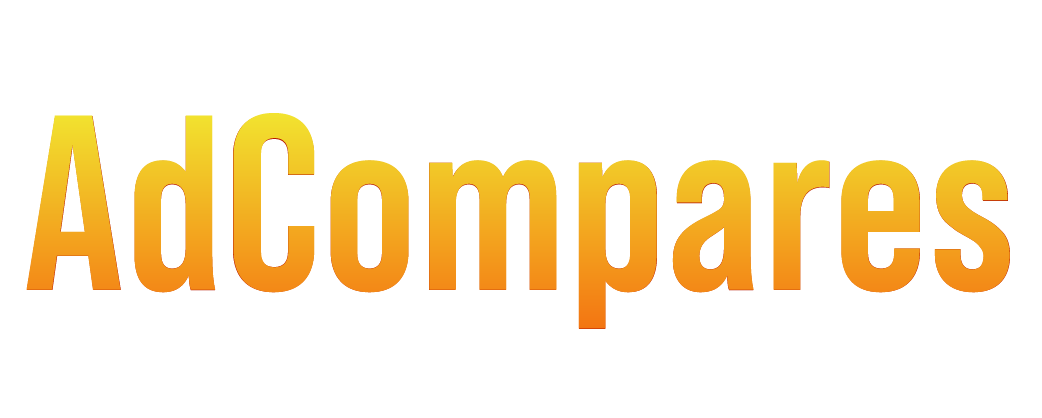
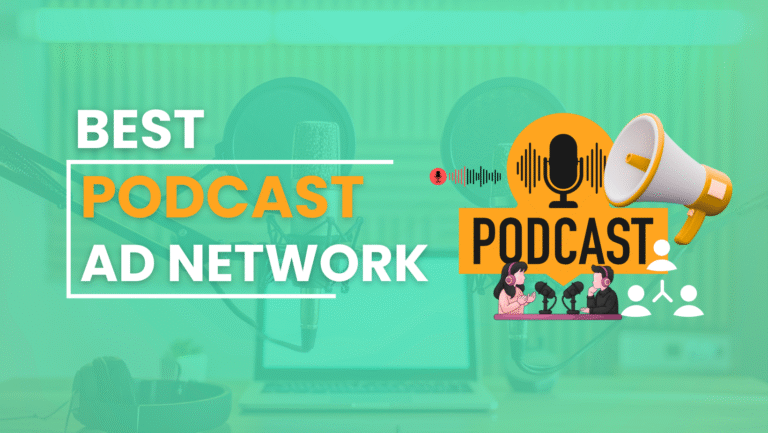
No Comments
Just wanna say that this is invaluable, Thanks for taking your time to write this.
Your comment is awaiting moderation.